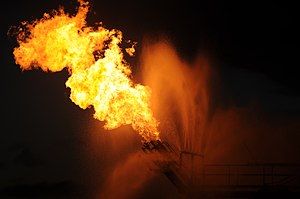
- Image via Wikipedia
These microscopic life forms are blooming as a result of the oil spilled into the Gulf of Mexico from the Macondo 252 deep-sea well
The Deepwater Horizon oil spill added roughly 800 million liters of hydrocarbons to the Gulf of Mexico. One quarter of that has been burned, captured or skimmed, according to U.S. government estimates. That leaves the rest for trillions of microbes to feast on—a petroleum cornucopia that first became available April 20 when the oil platform exploded and the spill started.
If the National Oceanic and Atmospheric Administration and director of the White House Office of Energy and Climate Change Policy, Carol Browner, are to be believed, those microbes have made quick work of the spill, consuming as much as 50 percent of the remaining oil already. Actually, the bacteria, fungi and other life that consume hydrocarbons do not work that fast, taking weeks to months to years to degrade oil. And, unfortunately, the microbes’ speed is limited not by the availability of oil—or even its droplet size, which is why chemical dispersants have been used to break up the oil into microbe-friendly globules—but by the availability of various nutrients, such as nitrogen and phosphorus that wash into the ocean via rivers carrying sediments from the continents.
Bioremediation—boosting microbial activity by ensuring a steady supply of such nutrients—is quite difficult in a case like the gusher in the Gulf of Mexico. “In the ocean how do you keep the nutrients with the oil?” says microbial ecologist Kenneth Lee, director of the Center for Offshore Oil, Gas and Energy Research with Fisheries and Oceans Canada, who has been assisting with BP’s mess. “That’s why you don’t see bioremediation in the open ocean.”
Related articles by Zemanta
- Gulf spill: Is the oil lurking underwater? (newscientist.com)
- You: Academic scientists say oil from gulf spill is not going away quickly (washingtonpost.com)
- A 22-mile oil plume is deep in cold gulf (philly.com)









